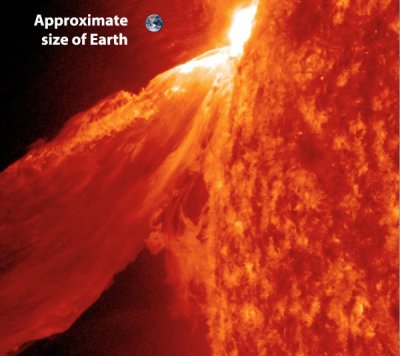“If it had hit, we would still be picking up the pieces,” said Daniel Baker of the University of Colorado this week.
“In my view, the July 2012 storm was in all respects at least as strong as the 1859 Carrington event,” said Baker. “The only difference is, it missed.”
On 23 July 2012, two coronal mass ejections (CME) burst out of the Sun’s surface within 15 minutes of each other and headed out into space at more than 3,000km per second. If they had erupted nine days earlier Earth would have been directly in its path. Instead, NASA’s Solar Terrestrial Relations Observatory (STEREO) satellite was perfectly positioned to record the blast.
For a paper [PDF] in the journal Space Weather, scientists analyzed the data from STEREO and found that the CMEs were the largest yet measured – and could even have exceeded the notorious 1859 Carrington event. Had they hit us, the resulting electromagnetic disturbance could have taken out most of the GPS network, communications satellites, electrical grids and some servers.
But we may not be so lucky next time, and research published in February by physicist Pete Riley shows solar storms of this magnitude are more common than first thought.
Riley went through the last 50 years of solar data and calculated that the chances of a Carrington-class storm hitting Earth over a decade were 12 per cent. See the full paper.
All the above is from a recent article at The Register.
And below is from a more in-depth article at NASA:
A paper in the March 2014 edition of Nature Communications by UC Berkeley space physicist Janet G. Luhmann and former postdoc Ying D. Liu describes the process: The July 23rd CME was actually twoCMEs separated by only 10 to 15 minutes. This double-CME traveled through a region of space that had been cleared out by yet another CME four days earlier. As a result, the storm clouds were not decelerated as much as usual by their transit through the interplanetary medium.
“It’s likely that the Carrington event was also associated with multiple eruptions, and this may turn out to be a key requirement for extreme events,” notes Riley. “In fact, it seems that extreme events may require an ideal combination of a number of key features to produce the ‘perfect solar storm.'”

